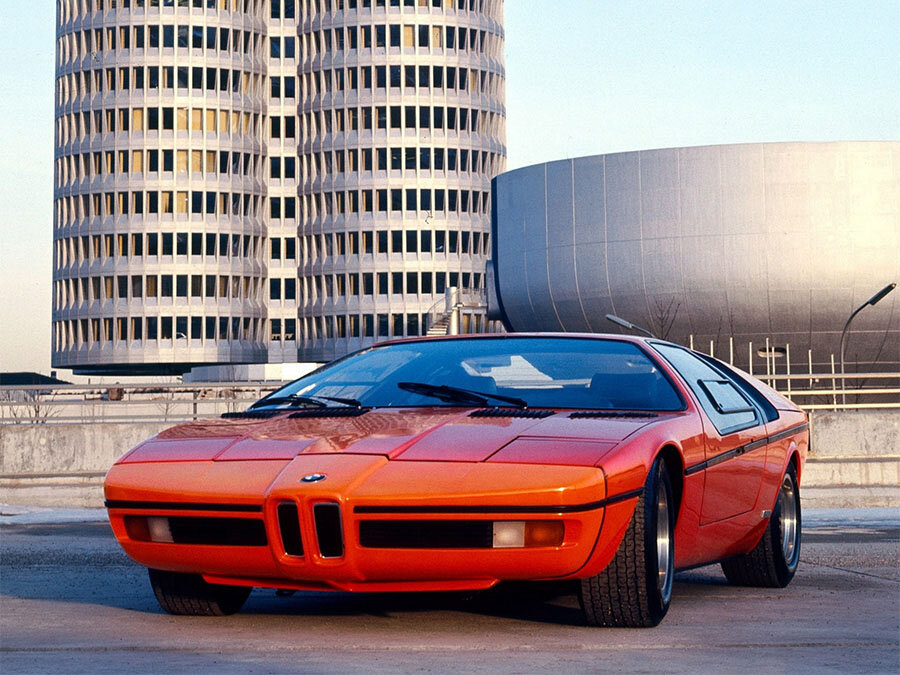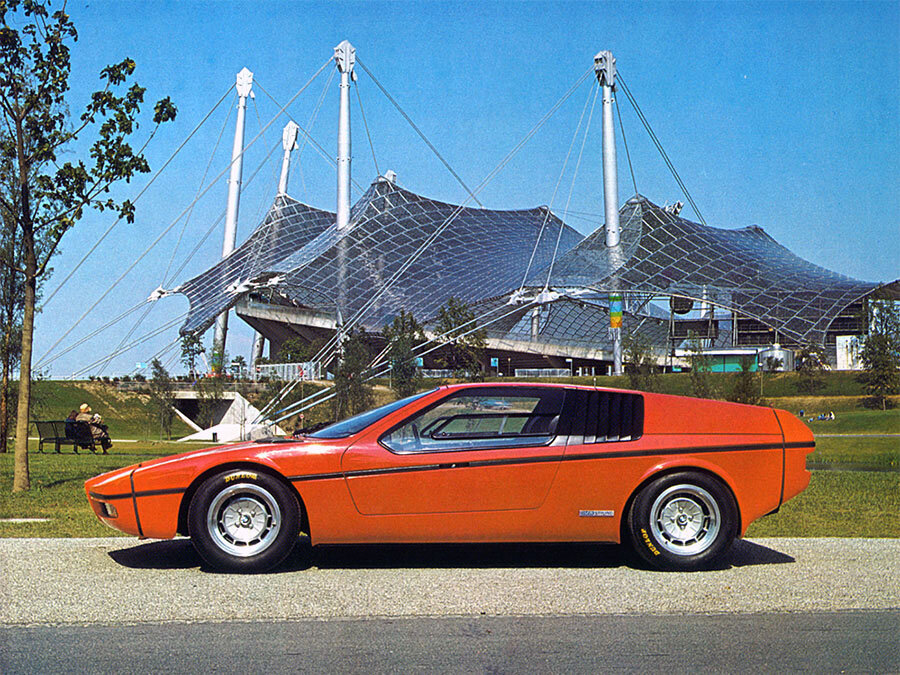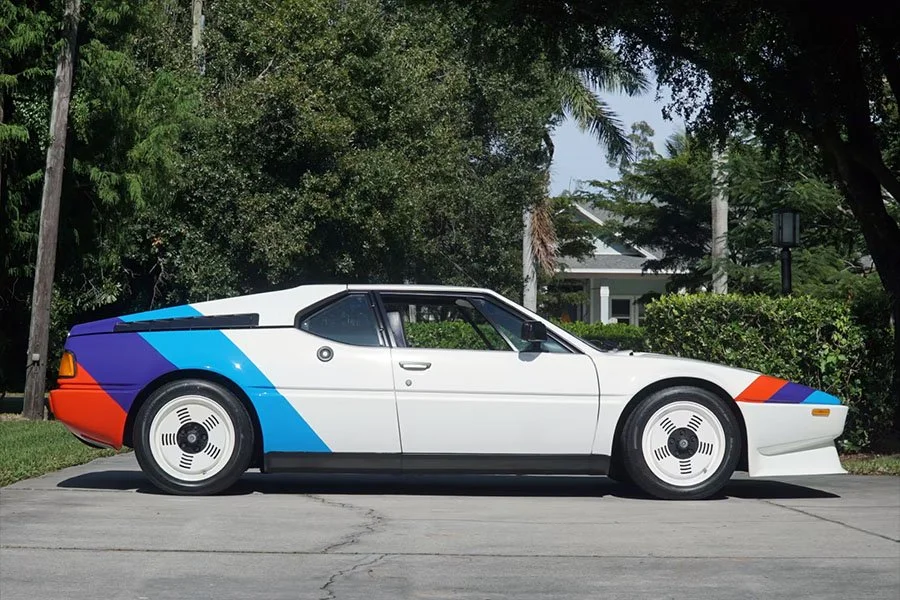Guide: BMW E25 Turbo - a Historical & Technical Appraisal
/BACKGROUND
At the Paris Motor Show in October 1972, BMW unveiled a spectacular design study called the E25 Turbo.
Despite its dream car looks and high performance underpinnings, the E25 Turbo was created to showcase a series of pioneering safety solutions.
At the time, authorities in the US were implementing major safety reforms and many European manufacturers were struggling to adapt their existing models in an elegant fashion.
BMW wanted to demonstrate that a safe car did not have to be ugly.
Since late 1969, domestic rivals Mercedes-Benz had received considerable press coverage with their series of C111 concepts. The C111 had raised the firm’s profile, improved their image and seen active duty as a rolling test-bed for the latest engine technologies.
The E25 Turbo would fulfil a similar role for BMW.
Paul Bracq (head of BMW design) was the E25 Turbo’s architect.
CHASSIS
The car was built by Michelotti in Turin around a modified 2002 unitary steel floorpan.
The wheelbase was reduced to 2400mm (nearly 100mm shorter than standard) and the chassis was modified to accommodate a mid-mounted engine.
Suspension was via a MacPherson strut arrangement at the front and semi-trailing arms at the back.
A pioneering anti-lock brake system was installed along with custom 14 x 9.5-inch wheels shod with Dunlop tyres.
Track was 1550mm front and 1530mm rear.
ENGINE / TRANSMISSION
To power the E25 Turbo, BMW installed the first forced induction version of Alex von Falkenhausen’s Type M10 power unit.
The engine featured a KKK BLD turbocharger and, less than twelve months later, a slightly detuned version of this power unit would be available to buy in the E20 2002 Turbo.
The motor fitted to the E25 Turbo comprised an iron block and aluminium alloy single overhead camshaft two-valve head.
It was transversely mounted in the chassis and drove the rear wheels.
At 89mm and 80mm respectively, bore and stroke were unchanged from the normally aspirated 2002 Tii. Displacement was 1991cc.
The compression ratio was reduced from 9.5 to 6.8:1.
Kugelfischer mechanical fuel-injection was employed along with an integrated boost enrichment feature. Although boost pressure was not disclosed, output was said to be 200bhp at 7100rpm.
Transmission was via a Getrag four-speed manual gearbox with single dry-plate clutch and ZF limited-slip differential.
BODYWORK
Visually, Bracq’s design was a complete departure from anything BMW had produced before.
Aside from the trademark kidney grilles, there was nothing of BMW heritage.
A wedge profile, retractable headlights and Gullwing doors were de rigueur for any mid-engined concept of the era.
Where the E25 differed from its peers was the extensive adoption of innovative safety features.
Deformable foam-filled front and rear body sections were mounted on impact absorbing hydraulic struts. After a low speed collision, they would return to their original shape and were very a neat idea.
The E25 Turbo also had side impact beams and a large glass area designed to eliminate blind spots.
Matt black engine cooling vents were located behind each side window and the engine cover was given a distinct convex profile.
There were no fixed wings but the rear wheels were later shrouded to improve aerodynamic efficiency.
INTERIOR
Equally futuristic was the interior which also had a host of new safety-inspired features.
The primary instrument binnacle featured scrolling graphics for speed, lateral G and the radar-controlled brake distance monitor that displayed the distance in metres to the car in front.
A control panel to the left of the steering wheel housed schematics of the cars systems along with warning lights to alert of any malfunction.
The central console was angled towards the driver. It was home to the supplementary gauges plus controls for the stereo and ventilation system.
For improved occupant protection, BMW replaced the cockpit’s hard surfaces with padded foam.
Inertia-reel seatbelts were installed along with an inhibitor switch that stopped the engine from starting unless the belts were engaged.
There was also an integrated roll-over bar and a collapsible steering column.
Black leather was used to upholster the bucket seats, sills, dash and door panels. The carpet was red to match the exterior.
WEIGHT / PERFORMANCE
With a weight of 980kg, the E25 Turbo had a top speed of 155mph and 0-62mph time of 6.6 seconds.
PRODUCTION
After a static display car was built for the 1972 Paris Motor Show, Michelotti constructed a second example.
This second example was fully operational.
It was used by BMW as a rolling test bed for technological systems, aerodynamics, cooling and handling.
Many of the design themes used on the E25 Turbo were later adopted on the E26 M1.
Text copyright: Supercar Nostalgia
Photo copyright: BMW - https://www.bmw.com


































